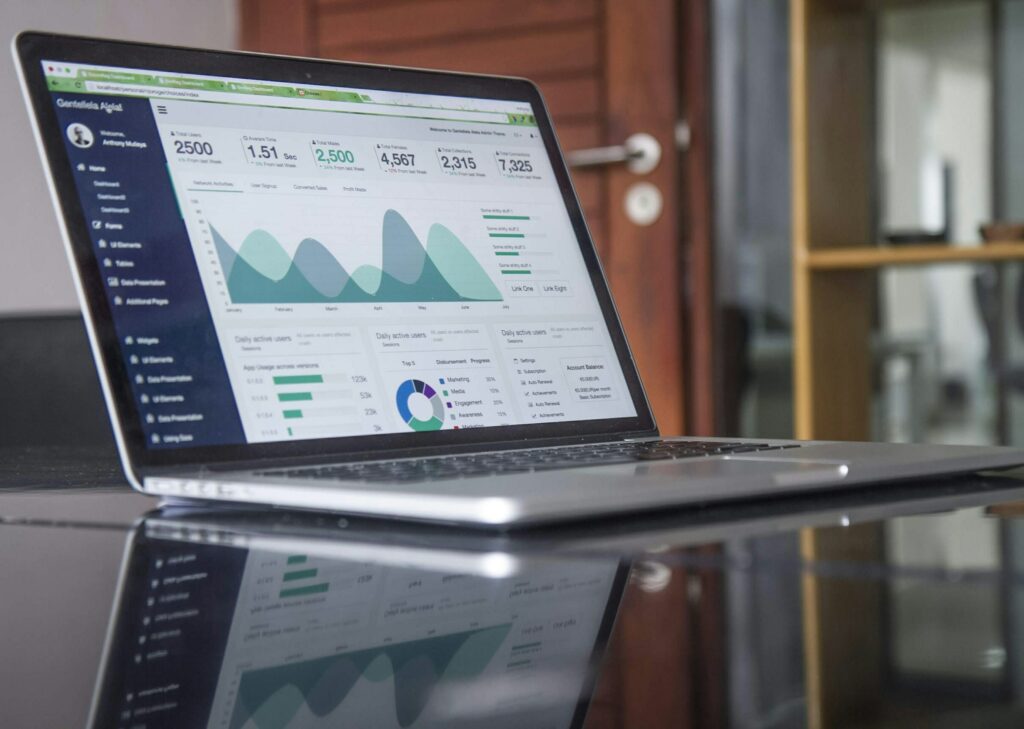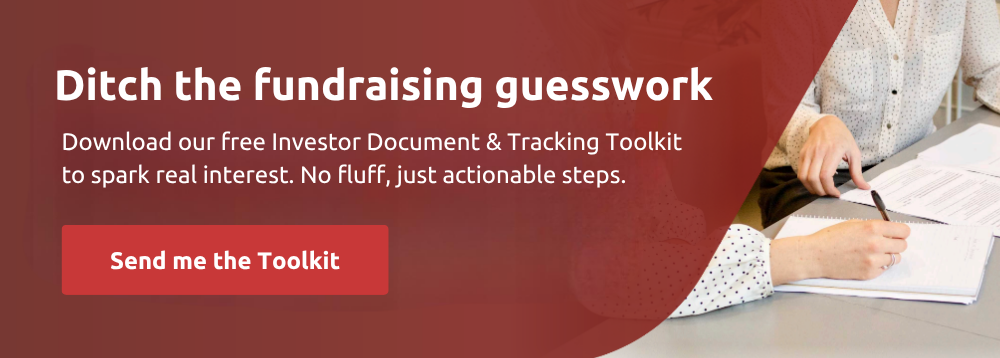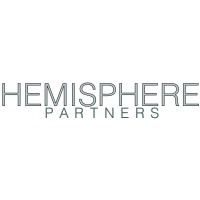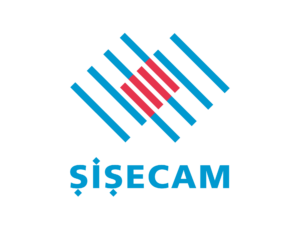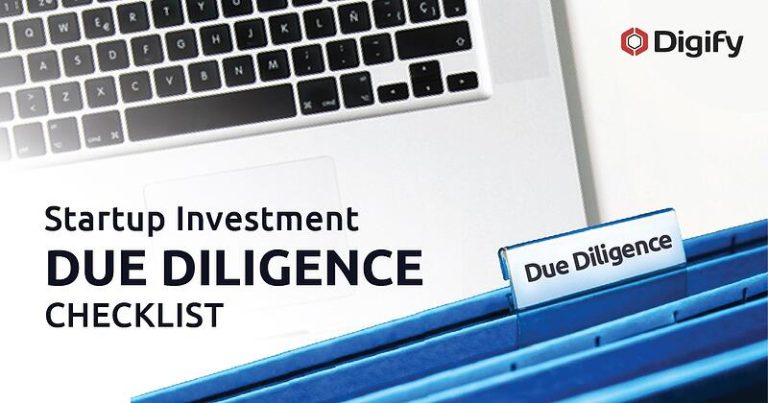This article is part of The Complete Guide to Raising Funds from LPs. The guide covers everything from defining your investment thesis and building strategic fundraising plans to mastering investor due diligence and navigating emerging trends like AI and ESG integration.
Each chapter builds on the previous ones to give you a complete fundraising playbook. While the article below is very informative, you’ll get the most value by reading the entire guide to see how you can fast-track your fundraising process.
Trying to get ahead in the private capital landscape may not strictly be a zero-sum game, but it is still incredibly competitive. In such an environment, the quality of your fundraising materials often determines whether investors engage with your opportunity or move on to the next one.
This chapter provides a comprehensive framework for creating the core components of your fundraising package: Private Placement Memoranda (PPMs), investor presentations (pitch decks), and market analysis. Each element serves a distinct purpose in your fundraising journey, but all must work in concert to present a cohesive, compelling investment narrative that withstands rigorous scrutiny.
The Private Placement Memorandum (PPM): Beyond Legal Compliance
For sophisticated investors, the Private Placement Memorandum (PPM) is the primary document for deep due diligence into your fund’s structure, strategy, and risk profile. Its contents must not only fulfill legal obligations but also provide compelling, detailed insights that affirm the investment opportunity.
Strategic Value vs. Legal Necessity
While a PPM is not legally required for private funds, it has evolved from a mere compliance document into a strategic asset in the fundraising process. As noted by Private Fund Insights, “Whether a sponsor must or should prepare a PPM is driven mainly by the expectations and requirements of the potential fund investors (who can range from institutional investors and pension plans to family offices and HNWI), rather than applicable securities laws.”
The PPM’s true value lies in its ability to comprehensively present your investment opportunity while addressing potential concerns before they arise. A well-crafted PPM builds credibility, demonstrates professionalism, and accelerates due diligence by providing thorough information in an organized format.
Key Components of an Effective PPM
An effective PPM must balance comprehensive disclosure with strategic positioning. The following are essential components that make up a good PPM document.
- The executive summary: This serves as a concise yet compelling overview of your investment strategy and opportunity. It should distill your fund’s value proposition into a few pages, highlighting your unique approach, team strengths, and target returns. This section often determines whether investors continue reading or set your PPM aside.
- Investment strategy and objectives: This section provides a more detailed explanation of your strategy, building on the investment thesis established in Chapter 1. Here you should explain your specific investment criteria and parameters, value creation approach, exit strategies and timeline expectations, target returns and benchmarks, and portfolio construction principles. The key is to demonstrate both thoughtfulness and discipline in your approach while conveying sufficient flexibility to navigate changing market conditions.
- Market analysis: This section provides the evidentiary foundation for your investment thesis. It defines your target market with precision, provides data-driven insights into market size, growth, and dynamics, identifies key trends and opportunities that align with your strategy, and acknowledges challenges while addressing how your approach mitigates them. Your market analysis must be rigorous enough to withstand scrutiny from knowledgeable investors while remaining accessible to those less familiar with your specific sector.
- Track record: For established managers, track record presentation is critical. For emerging managers, demonstrating relevant experience is equally important. Your team section should present performance data honestly but strategically, highlight successful investments and lessons learned, connect past experience directly to your current strategy, and address any potential concerns proactively. Attribution and performance calculation methodologies should be clearly explained to build credibility and transparency.
- Team background: Investors often say they invest in people as much as strategies. Your team section should highlight relevant experience and complementary skills, demonstrate domain expertise specific to your strategy, address team cohesion and working relationships, and present key advisors or operating partners who strengthen your capabilities. Biographies should emphasize experience directly relevant to your investment strategy rather than providing exhaustive career histories.
- Risk factors: The risk factors section requires a delicate balance between comprehensive disclosure and strategic positioning. This section should identify strategy-specific risks rather than generic statements, demonstrate detailed analysis of each risk, explain risk mitigation approaches where possible, and address both investment and operational risks. The goal is not to minimize risks but to show that you’ve identified and planned for them.
- Terms and legal structure: Here, you should present key terms clearly and transparently. Your presentation of fund economics should align with the structures discussed in Chapter 3, focusing here on effective communication rather than structural decisions. Explain the rationale behind your fee structure, detail the governance approach and investor protections, and clarify the distribution waterfall and carried interest calculations. Focus on creating alignment of interests rather than defending your economics.
Crafting a Cohesive PPM
Beyond the individual components, the PPM must tell a cohesive story that ties directly to your investment thesis. According to Growthink Capital, effective PPMs connect to the “other key investor fund-raising and growth strategy documents – business plan, investor presentation, financial projections, equity/debt issuance tables,” with the overriding objective of helping clients raise capital on the fastest possible timeline and on the best possible terms.
The PPM should balance thoroughness with readability, providing sufficient detail for comprehensive understanding while remaining accessible enough to engage even time-constrained investors. Well-designed tables, charts, and call-out boxes can highlight key information and improve readability without sacrificing substance.
Investor Presentations: Crafting Compelling Pitch Decks
While PPMs provide comprehensive information, pitch decks serve as the primary vehicle for initial engagement. Their purpose is to generate sufficient interest to warrant deeper exploration of your PPM and continued dialogue.
In the private equity and venture capital context, pitch decks must be sophisticated yet accessible, providing a clear snapshot of your strategy and opportunity without overwhelming the audience with excessive detail.
What to Include in Pitch Decks
The first few slides of your pitch deck should establish your fund’s investment thesis and vision. This section must succinctly answer fundamental questions about what opportunity you see in the market, why now is the right time to pursue this strategy, what specific approach you will take, and what target returns you expect to generate. A compelling thesis immediately distinguishes your fund from competitors and establishes the narrative foundation for the remainder of your presentation.
Research shows that successful pitch decks often feature the team slide early in the presentation. This section should highlight key team members with relevant experience, demonstrate domain expertise specific to your strategy, illustrate complementary skills across the team, and present a clear organizational structure. The presentation should convey not just individual credentials but how the team functions cohesively to execute the strategy.
Your market slides should effectively communicate the size and attractiveness of your target opportunity. This section should provide data-driven market sizing, highlight key trends supporting your thesis, address competitive dynamics, and identify specific segments or niches where you’ll focus. Visual representations of market data through charts and graphs can enhance comprehension and impact.
The investment strategy and approach section elaborates on how you’ll execute your thesis, including your deal sourcing approach and differentiated access, investment criteria and decision process, value creation methodology, portfolio construction principles, and exit strategies. Focus on demonstrating a systematic, repeatable process rather than opportunistic investing.
Performance data should be presented clearly and honestly, with relevant attribution and calculation methodologies noted. Your track record and case studies section should highlight representative investments that demonstrate your approach, show consistent application of your strategy, connect past experience to current opportunity, and address both successes and lessons learned. For emerging managers without a formal track record, relevant experience from prior roles should be presented with appropriate context and disclaimers.
The fund terms and structure section should concisely present the key economic and structural elements of your fund, including fund size and investment period, management fee structure, carried interest and hurdle rate, GP commitment, and key governance provisions. The emphasis should be on alignment of interests rather than detailed term negotiation.
Conclude with clear next steps for interested investors, detailing current fundraising status, target closing timeline, due diligence process overview, and contact information for follow-up. This creates a natural transition to continued dialogue with interested parties.
Design Principles for Fund Pitch Decks
Beyond content, the design of your pitch deck significantly impacts its effectiveness. According to fly-equity, you should “Keep it concise: Aim for 10-15 slides maximum. Each slide should convey a clear, focused message.” The deck’s visual design should reflect your firm’s professionalism and attention to detail. Consistent use of fonts, colors, and layout creates a polished impression that reinforces credibility.
Complex financial and market data should be transformed into clear, intuitive visualizations that communicate key insights at a glance. Avoid cluttered charts or graphs that require extensive explanation. The deck should follow a logical sequence that builds your case systematically, with each slide leading naturally to the next. This creates a compelling narrative arc rather than a disconnected series of information points.
Most successful pitch decks maintain a careful balance between text and visual elements. Text should be concise, with visuals reinforcing key messages rather than serving as mere decoration. Technical details, additional case studies, or expanded team biographies can be included in an appendix, allowing the main presentation to remain focused while providing supplementary information for interested investors.
The pitch deck should be viewed as a dynamic tool that can be customized for specific investor audiences. Having modular sections that can be expanded or condensed based on investor interests and time constraints provides valuable flexibility during the fundraising process.
Market Analysis: Building the Foundation of Credibility
Sophisticated investors know that even the most compelling investment thesis must be grounded in rigorous market analysis.
Effective market analysis serves multiple purposes: it validates the size and attractiveness of your target opportunity, demonstrates your team’s domain expertise and market understanding, identifies specific segments or niches where you have advantage, and anticipates potential objections or concerns investors might raise.
Essential Components of Compelling Market Analysis
Aim to showcase precise market sizing and carefully considered segmentation in your market analysis— this demonstrates your understanding of the opportunity landscape. This component should define the total addressable market with credible sources, segment the market in ways relevant to your strategy, identify your specific target segments and explain the rationale, and provide both historical context and forward projections. Avoid overly broad market definitions that lack credibility or specificity to your strategy.
Identifying key trends and growth drivers that support your thesis demonstrates foresight and strategic thinking. Your analysis should highlight macro trends influencing your target sectors, identify specific catalysts for growth or disruption, connect trends directly to your investment strategy, and address potential headwinds or countervailing forces. The analysis should show not just what is happening but why it’s happening and how it creates investment opportunities.
Understanding the competitive dynamics within your target markets is essential for credibility. Your assessment should map the competitive landscape comprehensively, identify key players and their relative positioning, analyze advantages and vulnerabilities, and explain how your strategy can take you to the top. The goal is not to suggest an absence of competition but to demonstrate how you’ll succeed within a realistic competitive context.
For many sectors, understanding the broader ecosystem is crucial for identifying opportunities. Your ecosystem analysis should map relevant supply chains or value networks, identify potential bottlenecks or pressure points, highlight areas of inefficiency or possible disruption, and connect insights to specific investment opportunities. This analysis demonstrates a systems-level understanding that goes beyond surface-level market research.
Don’t forget to include regulatory and policy factors as well; these can significantly impact investment opportunities. Your assessment should identify relevant regulatory frameworks and recent developments, assess potential policy changes and their implications, address compliance requirements and costs, and highlight how expertise on these matters factors into your strategy. Being thorough in this analysis demonstrates sophistication and risk awareness.
Research Methodologies and Data Sources
The credibility of your market analysis depends significantly on your research methodology and data sources. Conduct original primary research to show initiative and provide proprietary insights. This can take the form of interviews with industry experts and practitioners, surveys of relevant market participants, direct observation and field research, and analysis of proprietary data sets. Primary research findings like these often provide the most compelling and differentiated insights.
Secondary sources should be carefully selected and integrated to support your analysis. These could be industry reports from reputable firms, academic and scholarly research, government and regulatory data, and public company disclosures and presentations. Remember that the quality and diversity of these secondary sources significantly impact credibility.
The most compelling market analyses balance quantitative data with qualitative insights. Quantitative data provides empirical foundation, qualitative insights add context and nuance, case examples illustrate broader patterns, and expert perspectives validate conclusions.
How you present your analysis is as important as the content itself. Clear, professional charts and graphs, logical information hierarchy, consistent formatting and presentation, and executive summaries of key findings make it easy to comprehend and retain complex information.
Integrating Market Analysis Throughout Fundraising Materials
Rather than treating market analysis as a standalone element, it should be integrated throughout your fundraising materials in a coherent, consistent manner. Your PPM should contain a comprehensive market analysis section that provides the evidentiary foundation for your investment thesis. Key market insights should also be referenced in other sections to reinforce your strategy’s market alignment.
Your pitch deck should distill the most compelling market insights into concise, visually impactful slides that highlight key opportunities without overwhelming detail. Consider creating targeted supplemental materials for investors particularly interested in specific market segments or trends, allowing for deeper dives without cluttering your core materials. Anticipate market-related due diligence questions and prepare supporting analysis that can be shared during later stages of investor engagement.
The goal should be to create a consistent narrative that reinforces your investment thesis at every touchpoint.
Supplementary Fundraising Documents
While the PPM, pitch deck, and market analysis form the core of your fundraising package, several additional documents play crucial supporting roles in the fundraising process. These materials provide specialized information, address specific investor questions, or support particular stages of the fundraising journey.
Due Diligence Questionnaire
A well-prepared Due Diligence Questionnaire (DDQ) anticipates investor inquiries and streamlines the information-gathering process. Rather than just broadly covering topics, a comprehensive DDQ should include a detailed checklist addressing the following key areas that investors will scrutinize:
- Fund Overview & Strategy: Breakdown of the investment thesis and strategy, investment process, proprietary deal flow mechanisms and competitive advantages in sourcing. Specific examples of target investments and your value creation strategy for portfolio companies are also worth including here.
- Team & Organization: Biographies of key personnel, roles, responsibilities, and decision-making hierarchy, carried interest and compensation structure as well as any potential conflicts of interest and how they will be managed.
- Track Record & Performance: Historical performance data for prior funds or co-investments, assumptions and methodology used for calculating performance metrics, audited financials and third-party verification details. Detailed portfolio company summaries, including exits and current valuations can also go here.
- Risk Management & ESG: Identification of key investment risks and mitigation strategies, approach to portfolio diversification and concentration limits, ESG policies and any Diversity, Equity, and Inclusion (DEI) initiatives within the firm and portfolio.
- Operational Infrastructure & Service Providers: Fund administration procedures and systems, auditor and legal counsel details, compliance policies, procedures, and internal controls. Cybersecurity measures and data protection protocols as well as IT infrastructure and disaster recovery plans are also good to include.
- Legal, Tax & Regulatory: Overview of the fund’s legal structure and relevant regulatory exemptions (e.g., 506(b), 506(c), 3(c)(1), 3(c)(7)), tax implications for various investor types and regulatory registrations and licenses held by the firm or individuals. Also list your anti-money laundering (AML) and know-your-customer (KYC) procedures and any past or pending litigation or regulatory actions.
Develop a framework for efficiently customizing your DDQ for different investor types, including institutional templates (e.g., ILPA, AIMA), pension fund-specific requirements, sovereign wealth fund considerations, and family office priorities. This helps you balance standardization with responsiveness to specific investor needs.
Track Record Package
For established managers, a detailed track record package is another key supplementary document, providing crucial performance validation. In this, you prepare detailed investment-level data that demonstrates your approach, including entry and exit dates, investment theses and value creation plans, financial performance metrics (IRR, MOIC, etc.), attribution analysis, and key operational improvements. Aim to show a granular view here so that investors can understand your execution capability.
Provide a clear aggregation and analysis of your track record, including performance by sector/strategy/vintage, persistence of returns across cycles, comparison to relevant benchmarks, risk-adjusted performance metrics, and loss ratio and downside protection analysis. These analyses help investors contextualize your performance.
Develop detailed case studies that illustrate your approach, including initial investment thesis, value creation initiatives implemented, challenges encountered and addressed, exit process and outcome, and lessons learned and application to current strategy. Well-crafted case studies bring your strategy to life through concrete examples.
For emerging managers without traditional track records, relevant experience documentation becomes crucial. Secure attribution letters from previous employers that verify specific deals led or significantly contributed to, responsibilities and decision-making authority, and performance outcomes of attributed investments. These third-party validations provide crucial credibility.
Create standardized deal sheets for relevant prior experience, including investment rationale and thesis, personal role and contributions, value creation initiatives led, performance outcomes and key learnings. These structured presentations create a pseudo-track record that highlights transferable experience.
Financial Models and Projections
Sophisticated investors expect detailed financial materials that demonstrate analytical rigor, such as a comprehensive fund-level financial model. These models should include deployment pacing scenarios, management fee and expense projections, return distributions under various scenarios, waterfall calculations and carried interest projections, and sensitivity analyses for key variables.
Create analyses that illustrate your portfolio construction approach such as diversification parameters and rationale and expected investment allocations by sector/stage/geography. Additionally, consider showing correlation analyses between potential investments, and risk factor exposures and mitigation approaches. The goal here should be to demonstrate that you are being careful about portfolio-level risk management.
To illustrate your analysis process, provide templates for investment memoranda. This can be in the form of due diligence framework and methodology, valuation approach and methodology, risk assessment processes, and investment committee presentation format. Together, these templates display disciplined decision-making processes.
ESG and Impact Documentation
As environmental, social, and governance factors gain importance, dedicated ESG materials have become essential. In order to prove that you are taking these considerations into account, develop clear documentation of your ESG approach. For example, document your ESG policy and principles, integration methodology, exclusion criteria, and monitoring and reporting framework.
For impact-focused strategies, detailed methodology documentation is crucial. Documenting the theory of change framework, specific KPIs and the approach to measurement and verification becomes essential. These, along with documentation on alignment with standards such as Impact Management Project and Sustainable Development Goals, go a long way in establishing credibility in the increasingly scrutinized impact space.
Provide concrete examples of ESG implementation as well to translate policy statements into practical application. These examples should show the ESG due diligence process in action, value creation, risk mitigation through analysis, and impact outcomes achieved in previous investments.
Operational Infrastructure Documentation
Materials that demonstrate operational robustness provide important reassurance to investors. Prepare a comprehensive overview of your operational infrastructure, illustrating your organization chart and responsibilities, key systems and technology platforms, service provider selection, and business continuity and disaster recovery planning.
This documentation should also include relevant excerpts from compliance in order to showcase your awareness about regulations. These can be a summary of code of ethics, conflict of interest policy, personal trading policies, and cybersecurity and data protection approach.
As for the information about key service providers, include selection criteria and due diligence process, performance monitoring approach, contingency plans for provider changes, and references from other clients when appropriate.
Introductory and Marketing Materials
In addition to your formal pitch deck, other marketing materials can support different engagement contexts. For example, a concise (2-3 page) executive summary can serve as an initial introduction or follow-up reminder that can be easily shared and digested. This summary should distill your opportunity, including your core investment thesis, key team credentials, strategy differentiation, and target returns and terms.
It is also useful to have an FAQ document that proactively addresses common questions and demonstrates investor awareness. Such a document can address strategy clarifications, team background questions, performance methodology explanations, and fund structure and term questions.
Additionally, consider creating brief video materials to complement written documentation. These can cover team introduction and backgrounds, strategy overview from key principals, virtual tours of focus markets or sectors, and case study walkthroughs. These multimedia elements can create that extra personal connection and engagement.
Integrating Supplementary Materials
Ensure that these additional documents are properly integrated with your core fundraising materials. This means implementing a clear cross-referencing system between materials, including PPM references to supporting documents, links between pitch deck and detailed analyses, and navigation aids in your data room. Make it all work together such that it forms a cohesive information ecosystem rather than disconnected documents.
When you organize your materials, do so in a way as to support progressive disclosure based on investor interest. That means starting with initial engagement materials such as the executive summary and pitch deck. Then come second-level materials, namely PPM, case studies, FAQ; and then finally, detailed due diligence materials such as DDQ, models and operational documentation. This way, you can provide appropriate information at each stage of investor engagement.
You will also want to put in place efficient processes for customizing materials for different investors. Develop templated sections that can be easily adapted, modular components that can be included or excluded, and clear version control and approval processes.
By following such a process of developing and organizing supplementary materials, you create a comprehensive fundraising package that addresses the full spectrum of investor needs throughout the fundraising process. This level of preparation also displays professionalism, accelerates due diligence, and ultimately increases your probability of fundraising success.
Harmonizing Your Fundraising Materials in a Cohesive Narrative
While each component of your fundraising package serves a distinct purpose, they must collectively tell a coherent, compelling story about your investment opportunity. Core elements of your investment thesis and value proposition should be consistently articulated across all materials, with language and framing that reinforces rather than dilutes your key messages. Each material should provide an appropriate level of detail for its purpose: pitch decks offer concise, high-impact highlights, PPMs provide comprehensive explanation and documentation, and market analysis offers evidentiary support and contextual depth. Together, they create a multi-layered narrative that satisfies both initial engagement and detailed due diligence needs.
Consistent visual design, terminology, and tone create a professional, cohesive impression across all materials. This extends to formatting, color schemes, and graphic elements that reinforce your firm’s identity. Information should be sequenced strategically across your materials to guide investors through a logical progression from initial interest to detailed understanding: pitch deck creates initial engagement and interest, PPM provides comprehensive understanding and validation, and market analysis and supplemental materials address specific questions or concerns. This sequencing creates a natural due diligence pathway that builds conviction systematically.
Tailoring Materials for Different Investor Types
Different investor categories have distinct preferences and expectations for fundraising materials. Understanding these varying priorities allows you to emphasize specific aspects of your strategy and materials for different audiences without compromising the core narrative. Here are some ways you can approach customization for different audiences for effective fundraising.
- Institutional investors: They typically expect comprehensive, data-driven market analysis, detailed performance attribution and track record presentation, clear alignment with their investment mandates, and thorough risk mitigation strategies. For such investors, the materials should emphasize institutional-grade processes and governance.
- Family offices: In this category, the focus is often on alignment of values and investment philosophy, long-term partnership potential, direct access to the investment team, and co-investment opportunities. The materials therefore should highlight relationship aspects alongside investment merits.
- Individual investors: They prioritize clear, accessible explanations of complex strategies, personal relationships and trust factors, tax implications and structures, and potential for involvement beyond capital. You should therefore look to balance sophistication with accessibility.
- Fund of funds: Investors in this class scrutinize strategy consistency and discipline, team stability and succession planning, performance attribution and benchmarking, and operational infrastructure and compliance. Your materials should therefore demonstrate institutional quality and repeatability.
Digital Delivery and Data Room Organization
Digital delivery of materials has become standard practice in today’s fundraising environment. Organizing these materials effectively within a data room (as discussed in Chapter 2) is crucial for a seamless investor experience. Create an intuitive folder hierarchy that guides investors through your materials in a logical sequence, from executive summaries to detailed supporting documentation. The technical implementation details for data rooms are covered extensively in Chapter 5.
Organize materials to support a progressive disclosure approach, with top-level documents providing overviews and linked documents offering deeper dives on specific topics. Consider incorporating interactive elements that enhance engagement. For example, you could have expandable sections for additional detail, interactive financial models with adjustable parameters, video introductions from key team members, and hyperlinked navigation between related materials. These elements can significantly improve the investor experience while demonstrating technological sophistication.
Testing and Refining Your Materials Iteratively
Creating effective fundraising materials is an iterative process that benefits from testing and refinement. Before external distribution, conduct thorough internal reviews with team members not involved in development, advisory board members or trusted advisors, legal and compliance review, and “fresh eyes” review by those unfamiliar with your strategy. This identifies blind spots and ambiguities before they reach investors.
A good practice is to share draft materials with a small group of trusted potential investors who can provide honest feedback, industry experts who understand your target market, and investors known for constructive engagement. Their feedback often highlights questions or concerns that weren’t anticipated internally.
Once materials are in active use, systematically track investor responses. Note down common questions or concerns raised, sections that generate the most discussion, points of confusion or misunderstanding, and positive responses and resonant messages. This real-world feedback is invaluable for ongoing refinement.
Fundraising materials should evolve throughout your campaign.
Are there new developments in the market? Incorporate them in your campaigns. Seeing common questions? Address them proactively. Recorded any achievements or milestones recently? Highlight them on the spot. And of course, refine your messaging based on investor feedback. This proactive and agile attitude helps you be attentive and keep your materials current. The most successful fundraising campaigns treat materials as living, breathing documents that continuously improve rather than static presentations created once and used unchanged.
Common Pitfalls to Avoid
There are also several common pitfalls that can undermine otherwise strong fundraising materials.
- Information overload: This is a primary one. Don’t try to cram too much information into each slide or page. Focus on key points and use the appendix for additional details. Remember, materials should provide sufficient detail without overwhelming investors with excessive information.
- Unrealistic projections: Investors quickly lose confidence when they encounter projections that seem unrealistic or insufficiently supported. Keep your forecasts conservative with clear methodological explanations to build credibility. Generic or overly complex positioning statements fail to create a memorable impression.
- Contradictions and inconsistencies: If your materials don’t speak the same ground truth, it can create confusion and undermine confidence. Maintain rigorous consistency in data, terminology, and messaging. Materials that appear defensive about potential weaknesses or overly aggressive in dismissing risks signal insecurity rather than confidence. Acknowledge challenges candidly while explaining your approach to addressing them.
- Poor design: Professional visual presentation is no longer optional. Invest in professional design to enhance your presentation as visual quality directly impacts perceived professionalism.
Avoiding these pitfalls requires both self-awareness and external feedback throughout the material development process.
Given the ultra-competitive nature of today’s fundraising environment, your chances of success heavily depend on the quality of your materials. As fundraising timelines extend and investor scrutiny intensifies, superior materials create compound benefits throughout your fundraising journey.
Well-crafted materials in the initial stages can generate higher interest and engagement, expanding your funnel of potential investors. Similarly, comprehensive, well organized materials can accelerate the due diligence process, reducing time-to-commitment. Being thorough and professional with your materials can build credibility that extends beyond the documents themselves to your entire organization. Materials that effectively communicate your differentiation create a positioning advantage relative to competing funds. When investors develop high conviction through your materials, you maintain a stronger position in subsequent discussions about terms and conditions.
Investing adequate time and resources in creating superior fundraising materials can generate returns throughout your fundraising process and beyond. As you develop your PPM, pitch deck, and market analysis, remember that these are not merely documents but strategic assets that can significantly impact your fundraising trajectory.
By applying the principles and practices outlined in this chapter, you can create materials that not only withstand investor scrutiny but actively accelerate your fundraising journey, allowing you to close your fund efficiently and focus on what matters most: executing your investment strategy successfully.

